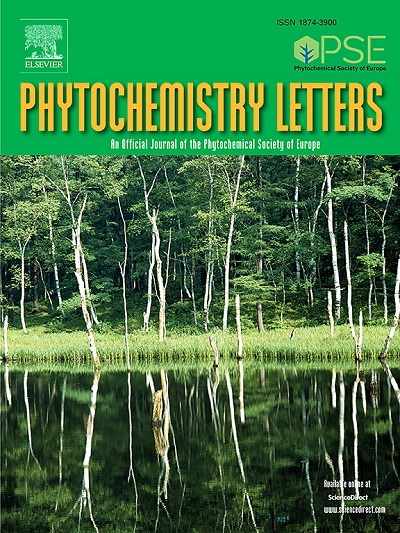Chemopreventive properties of naturally occurring methoxylated resveratrol analogues
IF 1.4
4区 生物学
Q4 CHEMISTRY, MEDICINAL
引用次数: 0
Abstract
Whereas thousands of papers have been published on the cancer chemopreventive properties of resveratrol (3,5,4′-trihydroxy-trans-stilbene) and related monomeric stilbenoids, there still is no consensus on their mechanism of action in a dietary setting. A widely held assumption is that the naturally occurring trans stilbenoids act as phytoestrogens, and thus affect cell metabolism of estrogen sensitive cells. This is known to be the mechanism of action for Tamoxifen, a synthetic drug with a stilbene moiety at its core, which is now approved as a chemopreventive agent. The bioavailability of resveratrol is low, which means that the doses known to inhibit cell proliferation in vitro (IC50 in the range 3–30 µM) are never reached in vivo. The cytotoxic activity of a methoxylated analogue of resveratrol, pterostilbene (3,5-dimethoxy-4’-hydroxy trans stilbene), is in the same range as resveratrol. However, the methoxylated trans stilbenoid appears have better pharmacokinetic properties. Still, its overall bioavailability in vivo seems insufficient to make it have any significant effect on modulation of carcinogenesis. Polymethoxylated cis-stilbenoids (combretastatins), in contrast to the trans-stilbenoids, are too cytotoxic to be considered as chemopreventive agents. Combretastatin A4 has been considered as a cancer therapeutic agent; it inhibits tubulin polymerization by interacting at the colchicine binding site of microtubules, a mechanism of action that is fundamentally different from that of the trans-stilbenoids. It may be speculated that naturally occurring trans stilbenoids selectively accumulate in precancerous cells, thus locally reaching sufficiently high levels. This hypothesis may be difficult to prove experimentally. Further clues on the material properties of stilbenoids will most likely come from synthetic chemistry, where a wide range of analogues can be investigated for structure–activity relationships.
天然存在的甲氧基化白藜芦醇类似物的化学预防特性
尽管关于白藜芦醇(3,5,4 ' -三羟基-反式二苯乙烯)和相关单体二苯乙烯类化合物的癌症化学预防特性已经发表了数千篇论文,但它们在饮食环境中的作用机制仍未达成共识。一种普遍的假设是,天然存在的反式二苯乙烯类化合物作为植物雌激素,从而影响雌激素敏感细胞的细胞代谢。众所周知,这就是他莫昔芬的作用机制。他莫昔芬是一种合成药物,其核心是苯乙烯部分,现已被批准为化学预防剂。白藜芦醇的生物利用度很低,这意味着在体内从未达到已知的体外抑制细胞增殖的剂量(IC50在3-30 µM范围内)。白藜芦醇的甲氧基化类似物紫檀芪(3,5-二甲氧基-4′-羟基反式二苯乙烯)的细胞毒活性与白藜芦醇在同一范围内。然而,甲氧基化的反式二苯乙烯似乎有更好的药代动力学性质。然而,其在体内的总体生物利用度似乎不足以使其在调节癌变方面有任何显着作用。多甲氧基化的顺式二苯乙烯类化合物与反式二苯乙烯类化合物相比,具有很强的细胞毒性,不能被认为是化学预防剂。Combretastatin A4被认为是一种癌症治疗剂;它通过在微管的秋水仙碱结合位点相互作用来抑制微管蛋白聚合,这种作用机制与反式二苯乙烯类化合物的作用机制根本不同。可以推测,自然产生的反式二苯乙烯类化合物选择性地积聚在癌前细胞中,从而在局部达到足够高的水平。这个假设可能很难用实验来证明。关于二苯乙烯类化合物材料性质的进一步线索很可能来自合成化学,在合成化学中,可以研究广泛的类似物的结构-活性关系。
本文章由计算机程序翻译,如有差异,请以英文原文为准。
求助全文
约1分钟内获得全文
求助全文
来源期刊

Phytochemistry Letters
生物-生化与分子生物学
CiteScore
3.00
自引率
11.80%
发文量
190
审稿时长
34 days
期刊介绍:
Phytochemistry Letters invites rapid communications on all aspects of natural product research including:
• Structural elucidation of natural products
• Analytical evaluation of herbal medicines
• Clinical efficacy, safety and pharmacovigilance of herbal medicines
• Natural product biosynthesis
• Natural product synthesis and chemical modification
• Natural product metabolism
• Chemical ecology
• Biotechnology
• Bioassay-guided isolation
• Pharmacognosy
• Pharmacology of natural products
• Metabolomics
• Ethnobotany and traditional usage
• Genetics of natural products
Manuscripts that detail the isolation of just one new compound are not substantial enough to be sent out of review and are out of scope. Furthermore, where pharmacology has been performed on one new compound to increase the amount of novel data, the pharmacology must be substantial and/or related to the medicinal use of the producing organism.
 求助内容:
求助内容: 应助结果提醒方式:
应助结果提醒方式:


